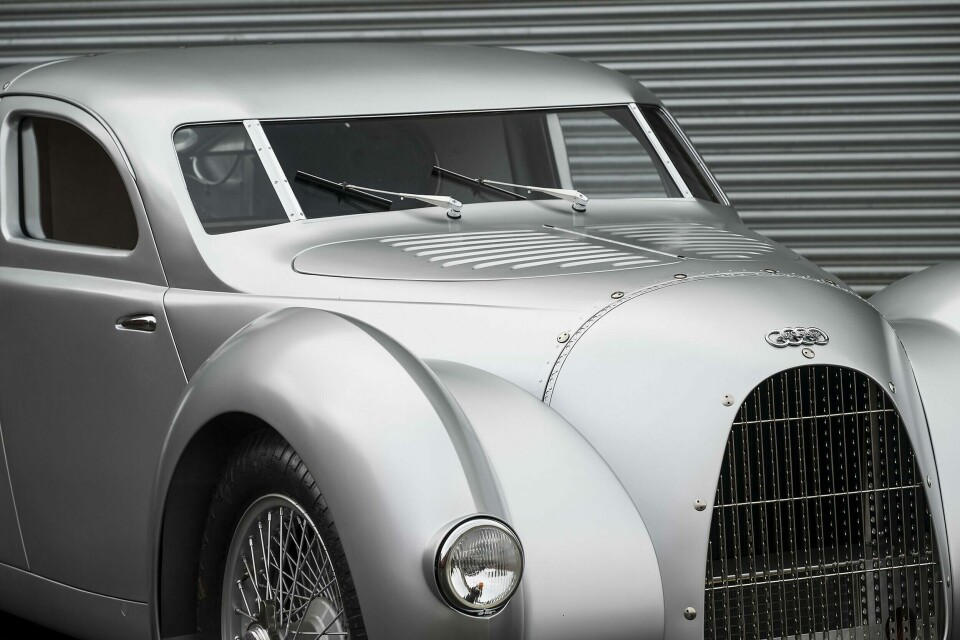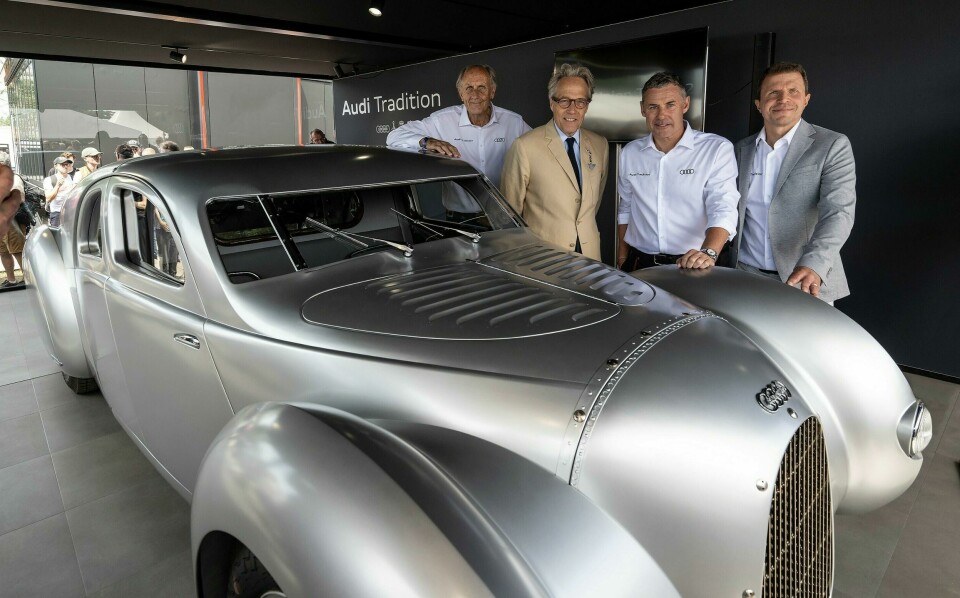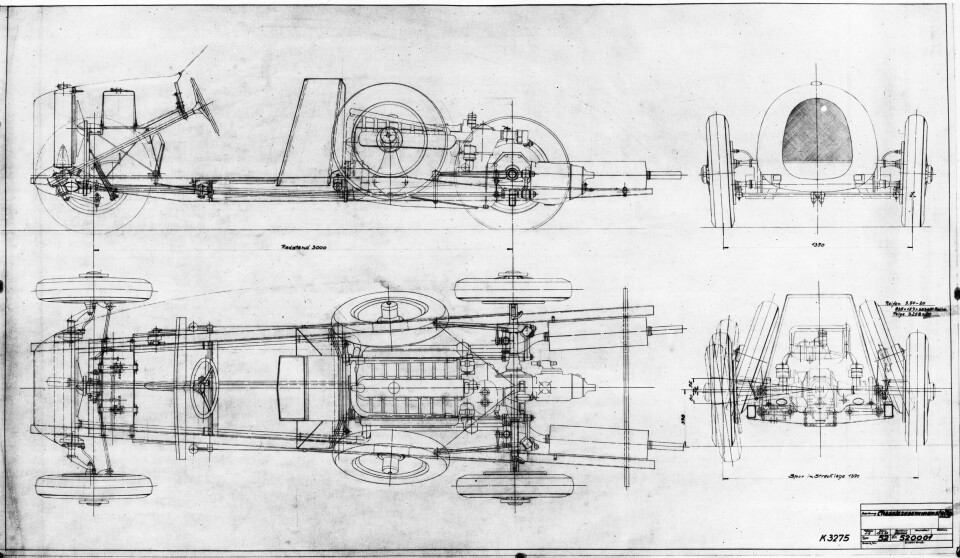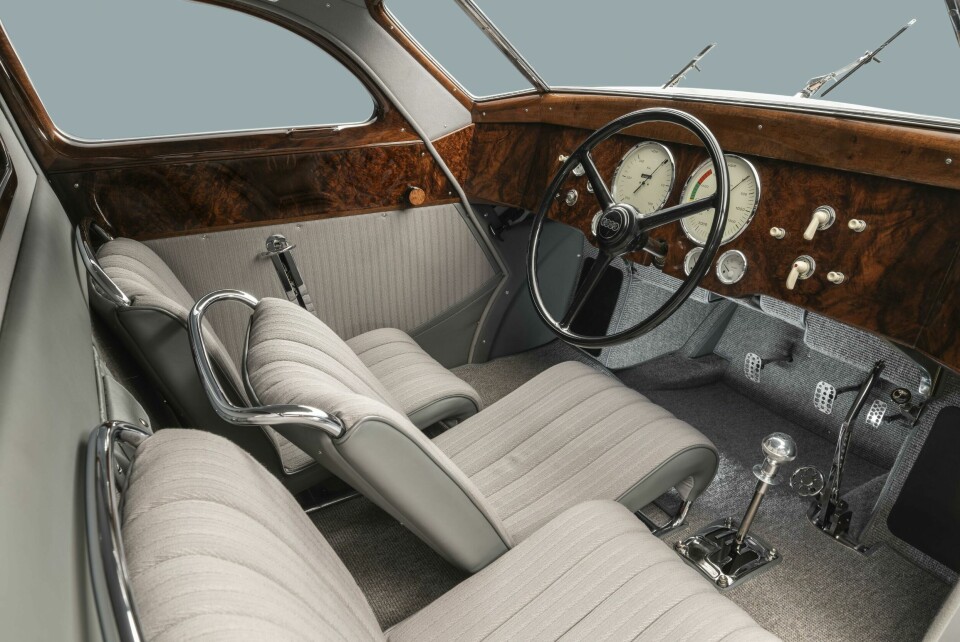
Audi revives Auto Union Type 52 Schnellsportwagen
Ninety years since the idea was first dreamed up by Porsche’s designers, Audi has finally built the Auto Union ‘Schnellsportwagen’
Designed as a road-going version of Auto Union Grand Prix racers of the period, the Auto Union Type 52 Schnellsportwagen never made it beyond paper in its time. Its original project name suggests the manufacturer’s hopes for it though, translating to “fast sports car”, adding emphasis on what was planned to be its defining characteristic: speed.
Since its unveiling at Goodwood Festival of Speed earlier this year, the Schnellsportwagen has become an award winning car with The International Historic Motoring Awards 2024 recognising it as the bespoke car of the year. Audi Tradition collaborated with Crosthwaite & Gardiner to realise the concept and Timo Witt, head of Audi’s historical vehicle collection, worked closely with them to lead the project to its conclusion. Car Design News spoke with Witt to hear more about this momentous 90 year-old dream.

Car Design News: Why did Audi feel now was the right time to bring the ‘Schnellsportwagen’ to life?
Timo Witt: The project took quite a long time to be honest. We are familiar with building and restoring old cars, these things normally take quite a while but overall it took around 10 years to complete this car. Work on the vehicle was not all consecutive and there were some gaps where we had other priorities at the time.
It was decided to create this car due to Audi competing in Le Mans. The basic idea was to convert a Grand Prix racer from 1934 into a road-going car for endurance races, long distance races and open road races. The Auto Union Type 52 was a perfect match to add another piece of history to our Le Mans race activities, so we decided to reveal the car at the Goodwood Festival of Speed this year.
CDN: What were the key challenges throughout the project?
TM: To make the car as authentic as possible based on how we think this car would have been done in 1934 in terms of interior and exterior design. We had a few design sketches and package ideas but far from having a complete designed car. We had to really try and think the way they did in 1934 and we didn’t have any photos because the car was never built.

The proportions of the car had to be right so we had discussions about stretching it a little bit. It wasn’t easy to get it right because we had the drawings but once we made them 1:1 scale we realised the wheelbase had to be modified. In the given package, we wanted to ensure that we had a three seater car but it was not possible with the given wheelbase so we had to adapt it without compromising the shape of the car. We had to interpret the design to keep everything as close to the same specification as possible.
CDN: Does the vehicle use any period components?
TM: The car is completely new, we did not use any period components but the components we used are built period correct. We can separate the construction of the car into three pieces. First, there are a lot of Auto Union Grand Prix parts in it. We know how these components look because we have some of these cars and we have built replicas before.
There are some parts which are completely new to us and there’s others in between. Some parts we know how they looked in the past so we’ve remanufactured and modified them. For example, the engine would have had an external starter motor but this car is modified with a starter motor so you can start it from the cockpit with a starter button.
CDN: How did you decide when to modify and when to stick to the original design?
TM: Most of the parts are modified, the car is basically a prototype car. We had to modify the track of the car so we couldn’t use any trail arms or wishbones from an Auto Union Grand Prix racing car so we had to modify these pieces for a wider track. Every decision on modifications or adaptations was technically driven.
CDN: What was your favourite part of the process?
TM: Designing the interior because none of this was given at all. We know there was a central driver’s seat and an adjustment in terms of passenger packaging to have additional seats either side. To find the right essence of the car of how it should look and feel internally you had to take yourself back to 1934, it was a great experience and also a nice challenge.

We chose a grey interior because the seats and stitching in the Grand Prix racing cars were grey as well. The Schnellsportwagen is a direct link to these cars with a closed cockpit so we decided to continue with the grey interior. If you sit an Auto Union Grand Prix racing car next to this one you can easily identify this is a family.
To add a little bit more grand touring luxury, back in the day it would have had a wooden dashboard. They didn’t have carbon fibre or anything like that, so we went for a wood interior to give it a very exclusive look and feel once you sit inside. This also goes along with the choice of instruments, we tried to keep the instrumentation much like the Grand Prix cars with a more luxury look and feel.
CDN: How did you ensure the interior had the right look and feel you were after?
TM: Luckily we have some other cars in our collection such as pre-war road cars so we took a seat in these cars and asked questions like, ‘How does it feel?’, ‘How does it look?’ and so on just to create an impression. We put the Grand Prix racing car next to it and tried to mix everything together. You need a feel for the type of cars but also for the technologies. How does a switch feel when you move it and what sound does it make? It’s definitely necessary to have that kind of tactile experience to make it look and feel as we imagine it was designed to.
CDN: What technologies did you use to visualise how the finished car would look?
TM: We kept it simple. The guys who did the bodywork had a 1:1 drawing on the wall so it was hands on and more or less done as it was back in the day, all by hand. We didn’t use any CAD visualisation or anything like that. It was almost like 1934 traditional handcrafting.
CDN: What can we learn from historic designs like this?
TM: It’s not necessarily learning about the historic design, I would say it’s more learning about the mindset of doing a project like this. It’s about the vision and being open minded to create something out of an idea and make it a reality. It was a very advanced idea in 1934 to create such a car and this is something we can learn nowadays, to take advanced ideas and have the courage to do it.














